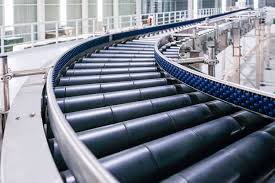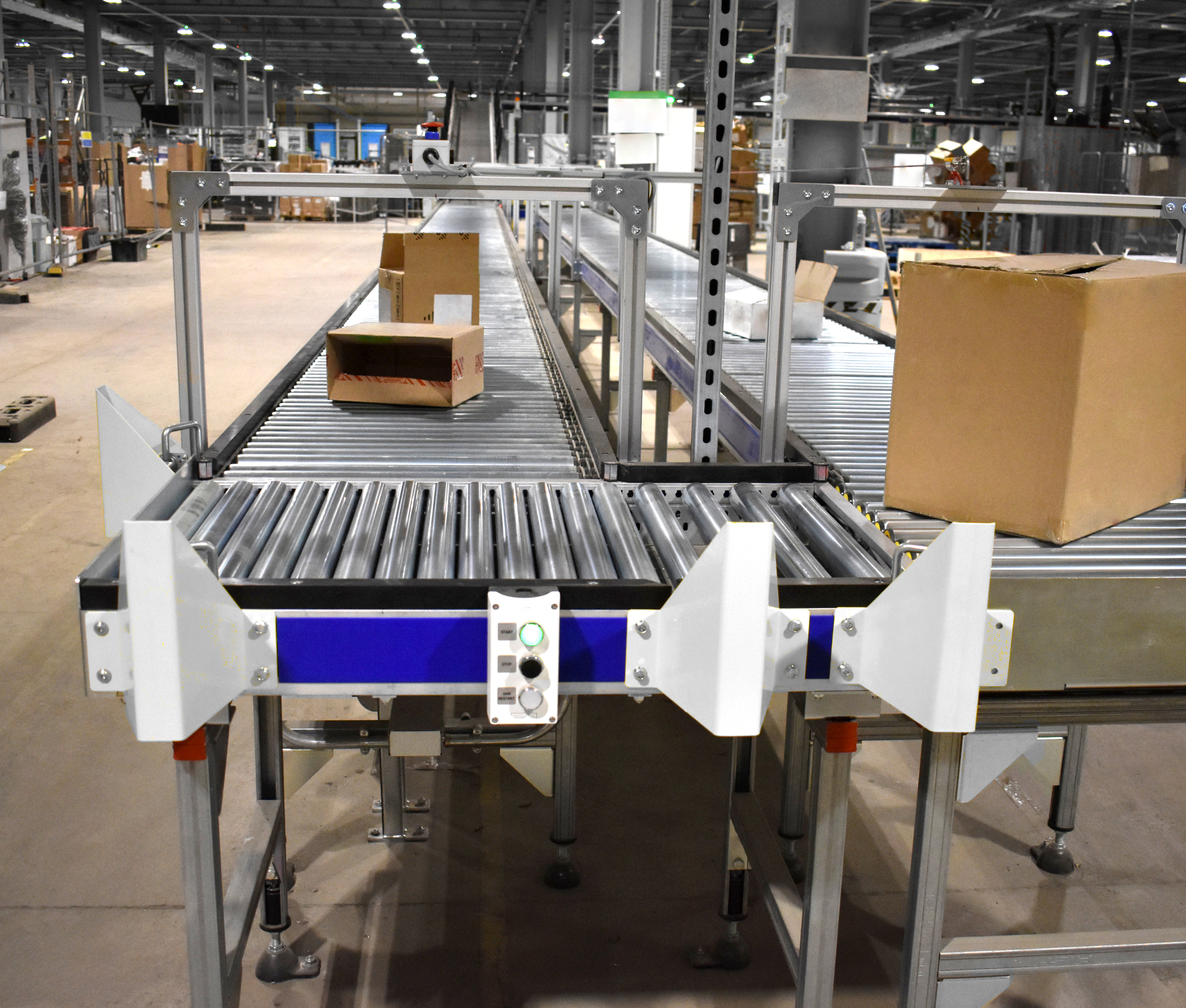Conveyor systems are an essential part of many industries, especially in the UK, where manufacturing, logistics, and warehousing play a crucial role in the economy. From speeding up production lines to improving the efficiency of transportation within facilities, conveyor systems help businesses save time, reduce manual labor, and enhance overall productivity. But with various types available, it’s important for businesses to understand which one suits their specific needs. In this blog, we’ll explore the different types of conveyor systems commonly used in UK industries and how they can benefit your operations.
1. Belt Conveyors
Overview: Belt conveyors are one of the most widely used types of conveyor systems across multiple industries, especially in food, packaging, and manufacturing sectors. They consist of a continuous loop of material, typically made from rubber, plastic, or fabric, that moves products from one point to another.
Applications:
- Transporting loose materials like grains or aggregates.
- Moving boxes and packages along assembly lines.
- Suitable for both incline and decline transportation.
Benefits:
- Simple design and easy maintenance.
- Ideal for transporting large quantities of materials.
- Versatile and adaptable to various industries.
2. Roller Conveyors
Overview: Roller conveyors use a series of rollers to transport products, making them an ideal choice for industries where heavier items or packaged goods need to be moved efficiently. These conveyors are often powered (motorized) or non-powered (gravity-fed).
Applications:
- Ideal for heavy-duty applications such as transporting pallets, crates, and cartons.
- Widely used in warehouses, airports, and distribution centers.
Benefits:
- Efficient and cost-effective for heavy and bulky items.
- Low maintenance and long-lasting.
- Can be used for both straight and curved paths.
3. Chain Conveyors
Overview: Chain conveyors use a chain to carry materials along a track. They are particularly useful in industries that deal with heavy, bulky, or large items that are not suited for belt or roller systems.
Applications:
- Used in automotive assembly lines, where heavy components need to be moved.
- Handling products in harsh environments such as hot or cold temperatures.
Benefits:
- Can carry heavy loads and withstand harsh conditions.
- Durable and reliable over long periods.
- Suitable for industries that deal with bulky or irregularly shaped items.
4. Pneumatic Conveyors
Overview: Pneumatic conveyors use air pressure to move products through a tube. This type of system is often used in industries that deal with powder, granules, or small items, like in food processing, chemicals, or pharmaceuticals.
Applications:
- Transporting powders, grains, or bulk materials like cement or flour.
- Moving lightweight or fragile items over long distances in an enclosed space.
Benefits:
- Ideal for materials that need to be transported in a clean, enclosed environment.
- Reduces the risk of contamination, especially in food or pharmaceutical industries.
- Can move materials across large distances, even vertically.
5. Spiral Conveyors
Overview: Spiral conveyors are a type of vertical conveyor system that moves items along a helical path, either upward or downward. These are ideal for applications where space is limited, and products need to be moved between different levels of a facility.
Applications:
- Moving small to medium-sized items between floors in warehouses or manufacturing plants.
- Ideal for applications that need to maximize space usage while maintaining high throughput.
Benefits:
- Space-efficient as they use minimal floor space.
- Reduces the need for large elevators or lifts in multi-level facilities.
- Can handle a wide range of materials, from light items to heavier loads.
6. Vibratory Conveyors
Overview: Vibratory conveyors use vibrations to move products along a path, typically on a trough or a series of trays. These systems are used primarily in industries where delicate or small items need to be handled gently.
Applications:
- Handling delicate items such as small parts in electronics manufacturing.
- Sorting and transporting materials in the food processing and pharmaceutical industries.
Benefits:
- Gentle on products, minimizing damage.
- Suitable for light or small items.
- Can be used for sorting, feeding, or aligning products.
7. Zig-Zag Conveyors
Overview: Zig-zag conveyors, also known as incline conveyors, are designed to move products at various angles, typically from one height to another. This type of conveyor is used when materials need to be transferred vertically or horizontally without taking up too much floor space.
Applications:
- Transferring products between production stages on different levels.
- Sorting materials in processing plants, especially for fragile products like food or cosmetics.
Benefits:
- Great for maximizing vertical space in warehouses or plants.
- Can be used for both ascending and descending tasks.
- Allows smooth transition of products between various stages of production.
8. Automated Guided Vehicle (AGV) Conveyors
Overview: AGVs are autonomous vehicles that follow predefined paths to transport goods around a facility. They are often used in combination with other conveyor systems for fully automated material handling solutions.
Applications:
- Automating the transportation of materials in warehouses or large manufacturing plants.
- Used in industries like automotive or electronics for assembly lines.
Benefits:
- Fully automated, reducing labor costs.
- Enhances flexibility and scalability in operations.
- Improves safety by reducing human intervention in material handling.
Conclusion
Understanding the different types of conveyor systems is crucial for selecting the best solution for your specific industry needs in the UK. Whether you are handling lightweight items, heavy-duty materials, or delicate products, there is a conveyor system that can help streamline your operations, improve efficiency, and reduce costs. Choosing the right type of system can help ensure that your business meets production goals, enhances product safety, and adapts to future challenges.
Before making a decision, it’s essential to assess your material handling needs, the weight and size of the items being transported, and the space constraints of your facility. With the right conveyor system in place, your business will be equipped to handle growth, improve throughput, and stay competitive in the ever-evolving UK industrial landscape.






